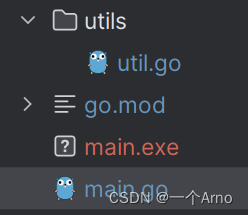前言
我们继续上一章没进行完的内容,构建一个客户端
命令行
我们希望用命令行的方式来管理我们的区块链系统,我们使用flag库来实现。
创建cli.go,代码如下
package cli
import (
"bytes"
"flag"
"fmt"
"lighteningchain/blockchain"
"lighteningchain/utils"
"os"
"runtime"
"strconv"
)
type CommandLine struct{
}
func (cli *CommandLine) printUsage() {
fmt.Println("Welcome to Arno's LighteningChain System!")
fmt.Println("===================================================")
fmt.Println("Usage:")
fmt.Println("---------------------------------------------------")
fmt.Println("To get started, create a new blockchain and declare the owner's address. " +
"You can then make transactions and mine blocks to add to the blockchain.")
fmt.Println("---------------------------------------------------")
fmt.Println("Commands:")
fmt.Println("---------------------------------------------------")
fmt.Println("createblockchain -address ADDRESS -> " +
"Create a new blockchain with the specified owner's address")
fmt.Println("balance -address ADDRESS -> " +
"Check the balance of a specific address in the blockchain")
fmt.Println("blockchaininfo -> " +
"View information about all blocks in the blockchain")
fmt.Println("send -from FROMADDRESS -to TOADDRESS -amount AMOUNT -> " +
"Create a new transaction and add it to the candidate block for mining")
fmt.Println("mine -> " +
"Mine a block and add it to the blockchain")
fmt.Println("===================================================")
}
func (cli *CommandLine) createBlockChain(address string) {
newChain := blockchain.InitBlockChain([]byte(address))
newChain.Database.Close()
fmt.Println("Finished creating blockchain, and the owner is: ", address)
}
func (cli *CommandLine) balance(address string) {
chain := blockchain.LoadBlockChain()
defer chain.Database.Close()
balance, _ := chain.FindUTXOs([]byte(address))
fmt.Printf("Address:%s, Balance:%d \n", address, balance)
}
// getblockchaininfo命令需要使用我们之前设计的迭代器遍历区块链。
func (cli *CommandLine) getBlockChainInfo() {
chain := blockchain.LoadBlockChain()
defer chain.Database.Close()
iterator := chain.Iterator()
ogprevhash := chain.BackOgPrevHash()
for {
block := iterator.Next()
fmt.Println("--------------------------------------------------------------------------------------------------------------")
fmt.Printf("Timestamp:%d\n", block.Timestamp)
fmt.Printf("Previous hash:%x\n", block.PrevHash)
fmt.Printf("Transactions:%v\n", block.Transactions)
fmt.Printf("hash:%x\n", block.Hash)
fmt.Printf("Pow: %s\n", strconv.FormatBool(block.ValidatePoW()))
fmt.Println("--------------------------------------------------------------------------------------------------------------")
fmt.Println()
if bytes.Equal(block.PrevHash, ogprevhash) {
break
}
}
}
// send命令将会调用CreateTransaction函数,并将创建的交易信息保存到交易信息池中。
func (cli *CommandLine) send(from, to string, amount int) {
chain := blockchain.LoadBlockChain()
defer chain.Database.Close()
tx, ok := chain.CreateTransaction([]byte(from), []byte(to), amount)
if !ok {
fmt.Println("Failed to create transaction")
return
}
tp := blockchain.CreateTransactionPool()
tp.AddTransaction(tx)
tp.SaveFile()
fmt.Println("Success!")
}
// mine命令调用RunMine即可
func (cli *CommandLine) mine() {
chain := blockchain.LoadBlockChain()
defer chain.Database.Close()
chain.RunMine()
fmt.Println("Finish Mining")
}
// 使用flag库将各命令注册即可
func (cli *CommandLine) validateArgs() {
if len(os.Args) < 2 {
cli.printUsage()
runtime.Goexit()
}
}
func (cli *CommandLine) Run() {
cli.validateArgs()
createBlockChainCmd := flag.NewFlagSet("createblockchain", flag.ExitOnError)
balanceCmd := flag.NewFlagSet("balance", flag.ExitOnError)
getBlockChainInfoCmd := flag.NewFlagSet("blockchaininfo", flag.ExitOnError)
sendCmd := flag.NewFlagSet("send", flag.ExitOnError)
mineCmd := flag.NewFlagSet("mine", flag.ExitOnError)
createBlockChainOwner := createBlockChainCmd.String("address", "", "The address refer to the owner of blockchain")
balanceAddress := balanceCmd.String("address", "", "Who need to get balance amount")
sendFromAddress := sendCmd.String("from", "", "Source address")
sendToAddress := sendCmd.String("to", "", "Destination address")
sendAmount := sendCmd.Int("amount", 0, "Amount to send")
switch os.Args[1] {
case "createblockchain":
err := createBlockChainCmd.Parse(os.Args[2:])
utils.Handle(err)
case "balance":
err := balanceCmd.Parse(os.Args[2:])
utils.Handle(err)
case "blockchaininfo":
err := getBlockChainInfoCmd.Parse(os.Args[2:])
utils.Handle(err)
case "send":
err := sendCmd.Parse(os.Args[2:])
utils.Handle(err)
case "mine":
err := mineCmd.Parse(os.Args[2:])
utils.Handle(err)
default:
cli.printUsage()
runtime.Goexit()
}
if createBlockChainCmd.Parsed() {
if *createBlockChainOwner == "" {
createBlockChainCmd.Usage()
runtime.Goexit()
}
cli.createBlockChain(*createBlockChainOwner)
}
if balanceCmd.Parsed() {
if *balanceAddress == "" {
balanceCmd.Usage()
runtime.Goexit()
}
cli.balance(*balanceAddress)
}
if sendCmd.Parsed() {
if *sendFromAddress == "" || *sendToAddress == "" || *sendAmount <= 0 {
sendCmd.Usage()
runtime.Goexit()
}
cli.send(*sendFromAddress, *sendToAddress, *sendAmount)
}
if getBlockChainInfoCmd.Parsed() {
cli.getBlockChainInfo()
}
if mineCmd.Parsed() {
cli.mine()
}
}
这样我们就分别实现了区块链的各种功能。
- createblockchain -address ADDRESS: 创建一个新的区块链,并指定拥有者的地址。
- balance -address ADDRESS: 查询指定地址的余额。
- blockchaininfo: 查看区块链中所有区块的信息。
- send -from FROMADDRESS -to TOADDRESS -amount AMOUNT:
创建一笔交易,并将其加入候选区块以进行挖矿。 - mine: 挖掘一个区块并将其添加到区块链中。
调试
main函数我们只需要放一个入口就可以
package main
import (
"lighteningchain/cli"
"os"
)
func main() {
defer os.Exit(0)
cmd := cli.CommandLine{
}
cmd.Run()
}
如上,我们现在就可以开始编译我们的go程序了。
首先输入go build main.go创建可执行文件

接下来我们便可以运行了,使用命令行和goland中自带的控制台都可以

另外我们在tmp文件夹下创建一个blocks路径,暂存我们的区块

没输入命令的话,程序会自动退出,我们首先创建一个区块链,地址就写自己
输入:.\main.exe createblockchain -address Arno
输出:Genesis Created Finished creating blockchain, and the owner is: Arno
后面的大家可以自己测一测,我就不一一截图了。
当然上一章提到的双花bug还是存在的,这就需要我们在RunMine函数中增加对交易信息池中交易信息的验证,这将会在以后的章节中实现。
总结
这两章我们讲解并实现了区块链的存储与读取,同时更加深入地了解了交易信息池与挖矿过程,最终建立了一个命令行程序来管理我们的区块链系统功能。在下一章我们将会进入虚拟钱包wallet的讲解,这会涉及到区块链的核心内容非对称密钥等相关知识。